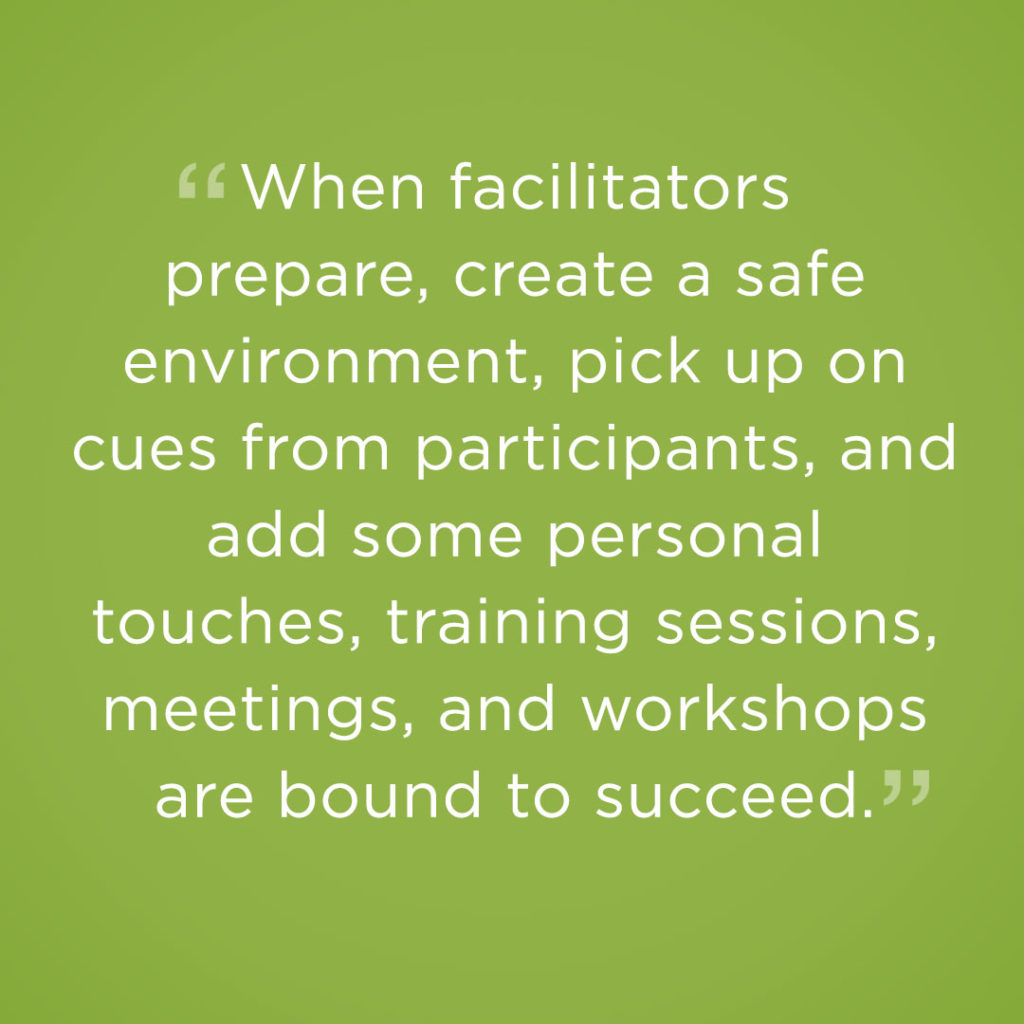Facilitation can make or break meetings, training, webinars, or workshops. While the learning landscape moves toward an automated future with advances in AI, the industry’s essential human element can never be replaced. A facilitator plays a critical role in bringing content to life and ensuring participants are engaged and learning—whether virtually or in person. They provide a level of empathy to the learning environment or meeting room that technology cannot replicate. We’ve put together a few tips for successful facilitation we think will withstand the test of time.
ALWAYS BE PREPARED
Preparation is key to successful facilitation. Facilitators must know both their audience and the content before leading a session so they can more confidently bring out the best in their participants. Facilitators should allocate plenty of time to studying and practicing with their scripts or facilitator guides so their delivery is polished once it’s showtime.
Facilitators should also consider the mindset of the participants prior to the training session or meeting. Facilitators can harness their knowledge of the participants to customize the experience and remind them why the material is beneficial.
As we look ahead to the future of facilitation, it’s likely virtual meetings and training sessions are here to stay. To prepare for leading virtually, facilitators should also spend time learning the meeting platform to avoid hiccups.
CREATE A SAFE ENVIRONMENT
Once the session begins, a facilitator’s role is to engage participants and help them take ownership of their learning. Participants won’t interact well with the material or one another if they aren’t comfortable. Facilitators can promote a sense of safety by providing positive feedback when participants are engaged and asking questions, making eye contact, presenting conversationally, using inclusive language (words like we/you), and by addressing participants by name.
Exceptional facilitators consider everything from lighting, to music, to the energy they bring to the room—even in a virtual setting. Regardless of changes in the platform, connection is key. When presenting virtually, a facilitator should turn on their camera and ensure their space is well-lit. Additionally, virtual facilitators should ensure the participants feel comfortable with the platform. To ease any technology-related anxiety, facilitators can kick off their sessions with a quick tour of everything participants will use within the meeting platform.
READ THE ROOM
Successful facilitators should know when to change gears or take breaks. If the session gets off track, facilitators guide the participants back to the content with care. If one person seems to be doing all the talking, invite more people to participate. Look for cues that indicate participants aren’t engaged: fidgeting, changes in body language, lack of eye contact, etc. Proactively scanning for these clues is especially important in a virtual setting, as participant attention spans tend to be shorter.
ADD A PERSONAL TOUCH
Beyond the facilitator guide, facilitators can leverage their own experience and successes. Weaving personal stories into the content can help illustrate concepts for the participants. This kind of meaningful connection will help participants see how the material applies to their work.
When facilitators prepare, create a safe environment, pick up on cues from participants, and add some personal touches, training sessions, meetings, and workshops are bound to succeed.
SOURCES
Gautam, Amit. How Artificial Intelligence Can Transform Employee Training In 2020 And Beyond. (2019, November 29). eLearning Industry. https://elearningindustry.com/how-artificial-intelligence-transforms-employee-training



